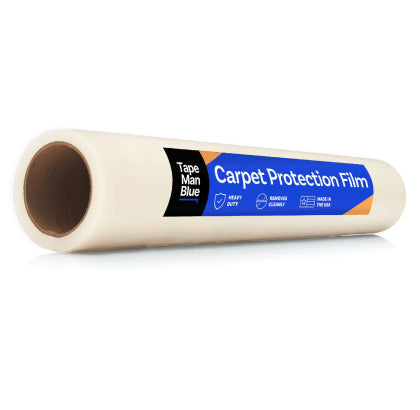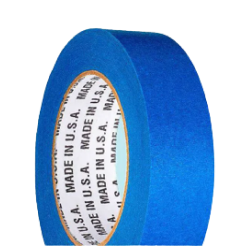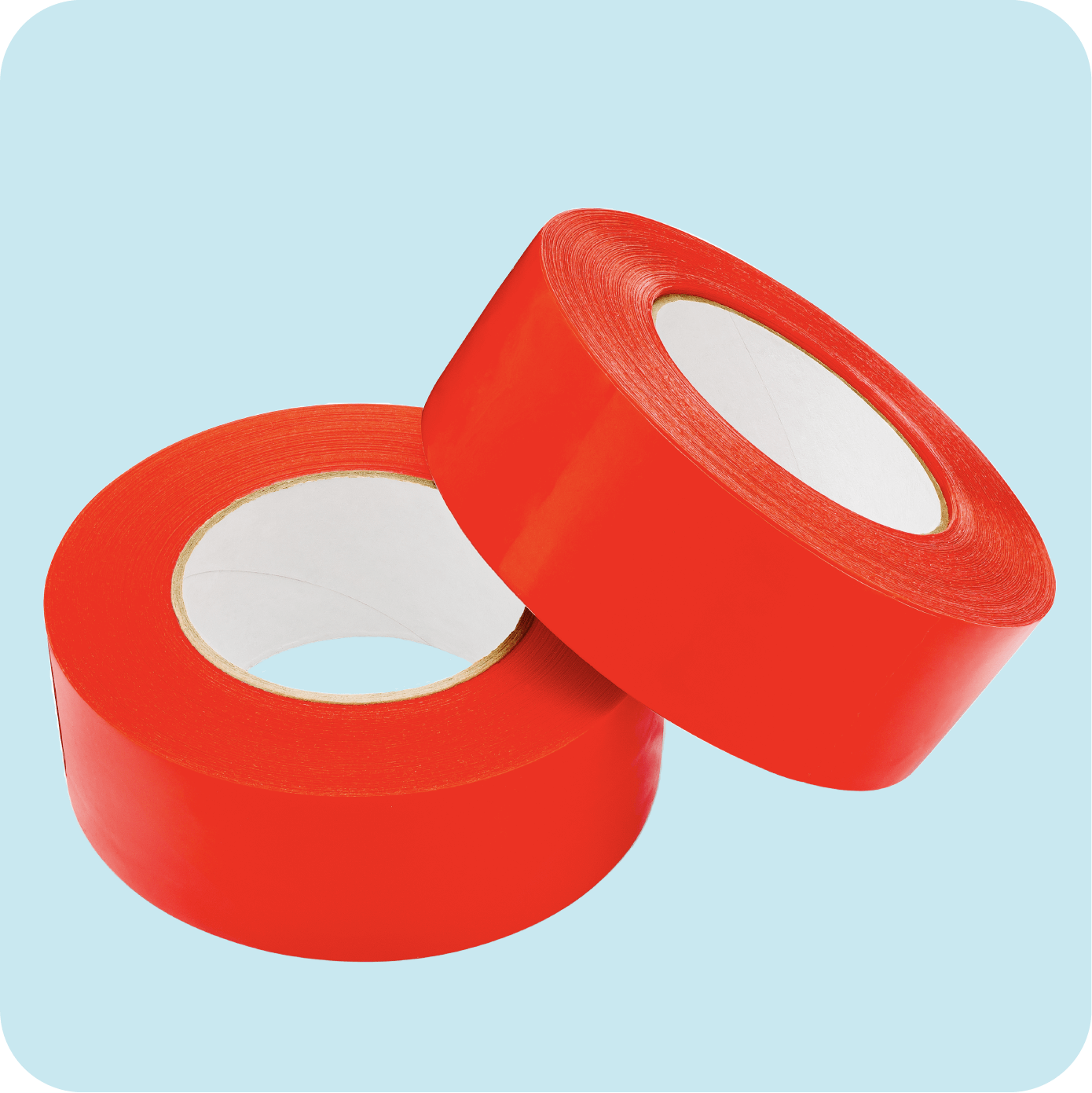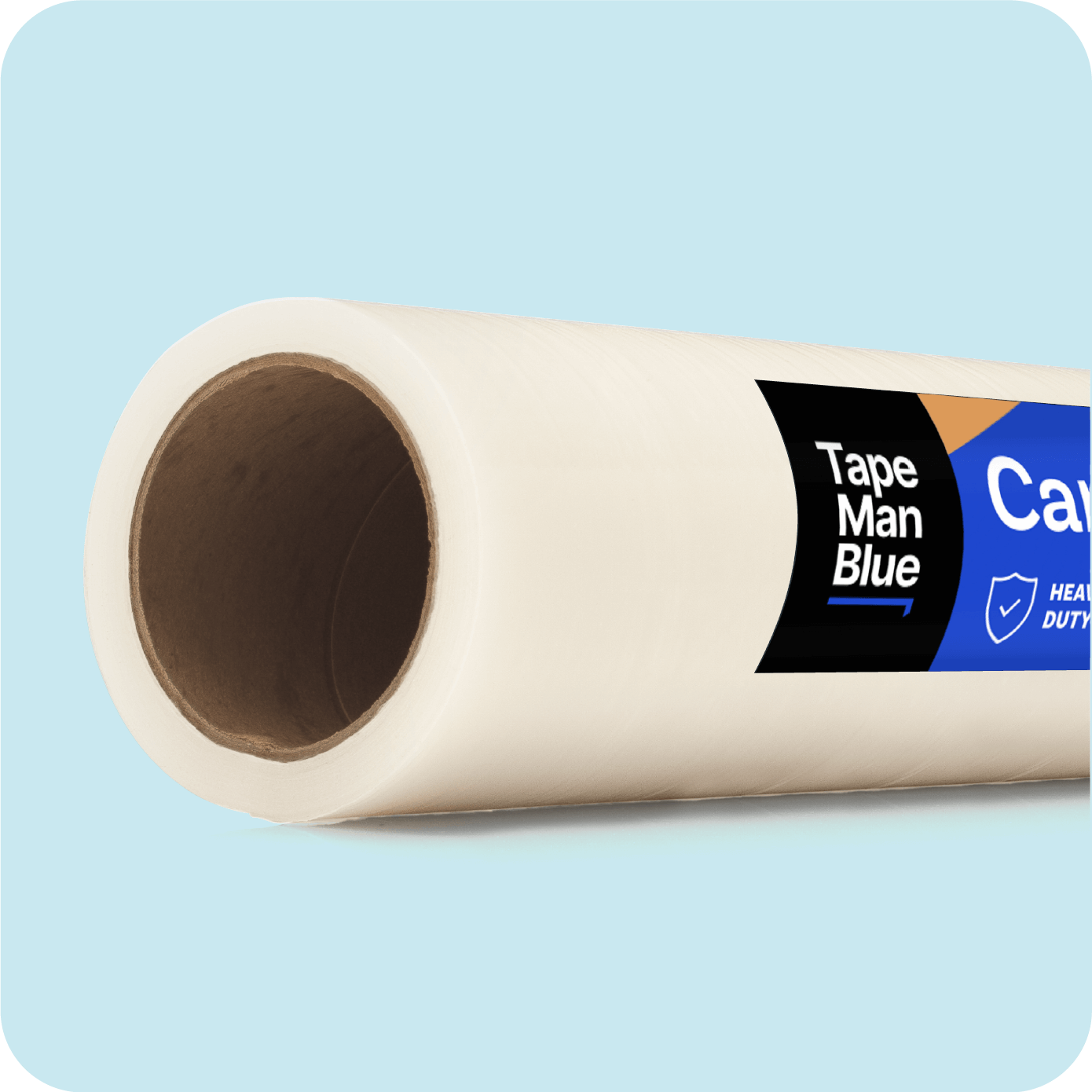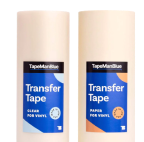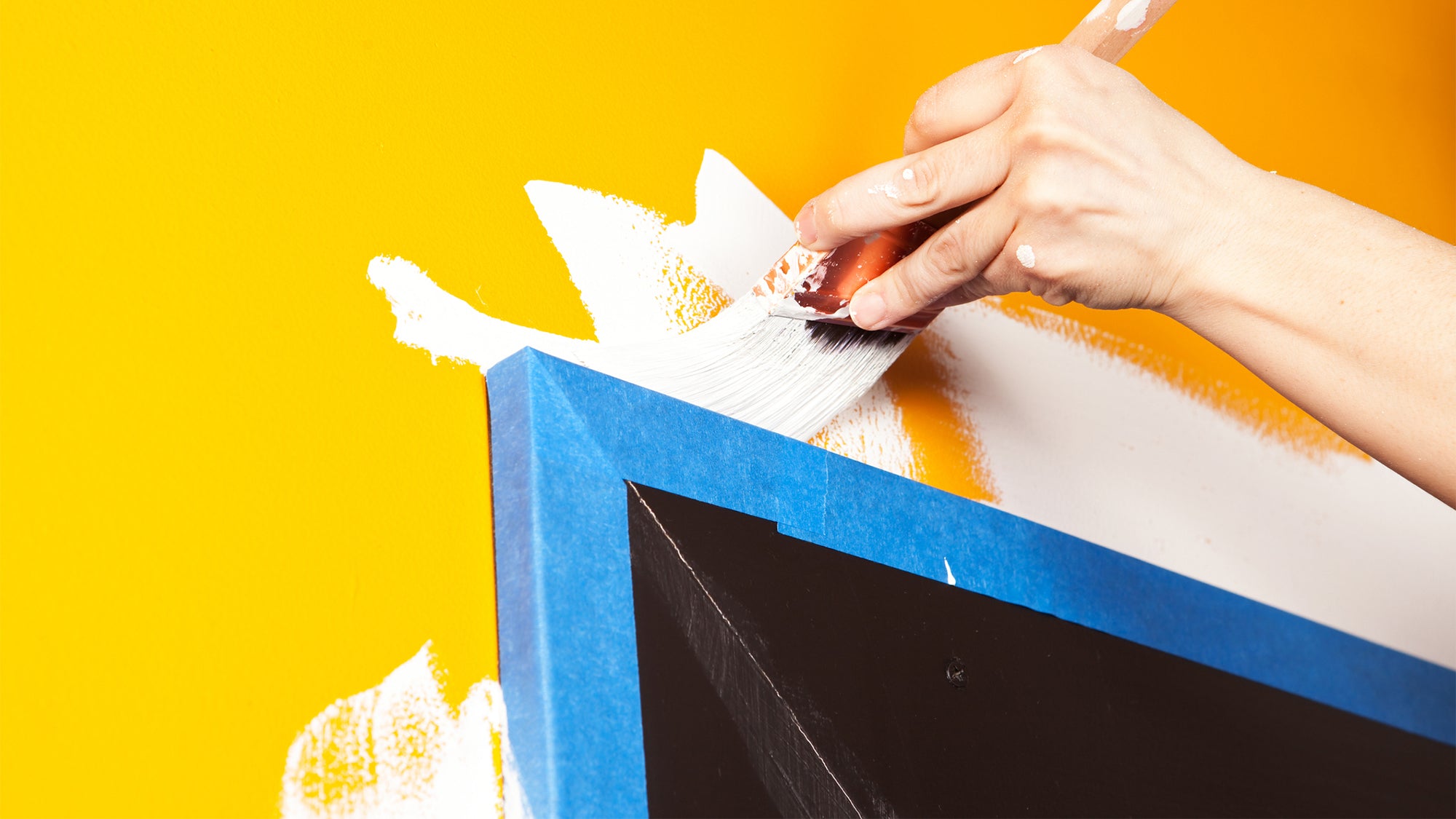Thinking about sprucing up your home or business with a quick paint job? Whether this is your first big project or you're a seasoned pro, one of the first decisions to make is what kind of tape to use when painting.
The tape you use can make or break your paint job. You don't want to cut corners as far as getting crisp, clean lines and protecting your walls from residue due to cheap tape. TapeManBlue is here to set the record straight when it comes to choosing quality painter's tape vs. masking tape.
Is There a Difference Between Painter’s Tape and Masking Tape?
Yes. The difference between painter’s tape and masking tape lies primarily in the adhesive. Masking tape is designed to be extra sticky and not come off, while painter’s tape is designed to have a low tack that makes it easier to remove after painting and less likely to leave residue. Painter’s tape is a specialized type of masking tape. Essentially, all painter’s tapes are masking tape, but not all masking tapes are painter’s tape.
Is Painter's Tape Better Than Masking Tape?
The answer may vary depending on the specifics of your project. But the easy answer is yes. When it comes to protecting walls while painting, blue painter's tape is the industry standard.
Masking tape and painter's tape may look and feel similar, but you'll notice a difference in how they perform. Using a tape that is designed specifically with painting in mind makes all the difference between getting a job done right the first time vs. spending hours removing masking tape residue, repairing walls and doing touch-ups.
The Problem with Using Masking Tape for Painting
If you decide to use masking tape for wall painting, the biggest thing you'll need to watch for is residue. The adhesive used in a lot of masking tape is reasonably strong and will hold up for the duration of many projects. As a result, you may be unable to peel the masking tape off the wall cleanly.
Some masking tapes will give you the opposite problem. If the tape is not sticky enough, it all comes undone after you’ve taped the surface or while you're working, allowing the paint to seep through.
Masking tape may be fine if you're doing a quick project in your home and have the time to address any residue or touch-ups. However, if you're working on a project for business, using masking tape can set you back days or weeks — costing valuable time and money.
The Benefits of Using Painter's Tape
Painter's tape is typically clearly labeled so you know how long you can safely leave the tape on the wall and expect clean removal. In most cases, painter's tape is effective for longer than masking tape, so you can leave it up for the duration of most paint jobs. Clean removal time for painter's tape may be anywhere from a few days to several weeks. Based on the label, you'll know what to expect upfront and can plan ahead to avoid residue.
Painter's tape is made specifically to be used with paint and formulated to keep the liquid from seeping through. You'll have clean lines every time. General-purpose masking tapes might not deliver the same results — and you're better safe than sorry.
There are times when you need something stronger than standard blue painter's tape or masking tape. When you are painting on rough, uneven surfaces or need stronger tack adhesion, turn to green painter's tape for your project needs.
The Bottom Line
General-purpose masking tapes aren't designed for clean removal. So whether you're doing fun DIY projects or professional paint jobs, painter's tape is the way to go.
Feeling Stuck? TapeManBlue Is Here for You
At TapeManBlue, we're your one-stop-shop for buying blue painter’s tape, stucco tape and surface films in bulk. We proudly sell affordable, high-quality, American-made products with free shipping on all orders and bulk quantity discounts.
You can purchase our blue painter's tape products and check out our blog for the latest tips and tricks for painting. Feel free to contact us online — we'd love to help you get started on your next project today.


